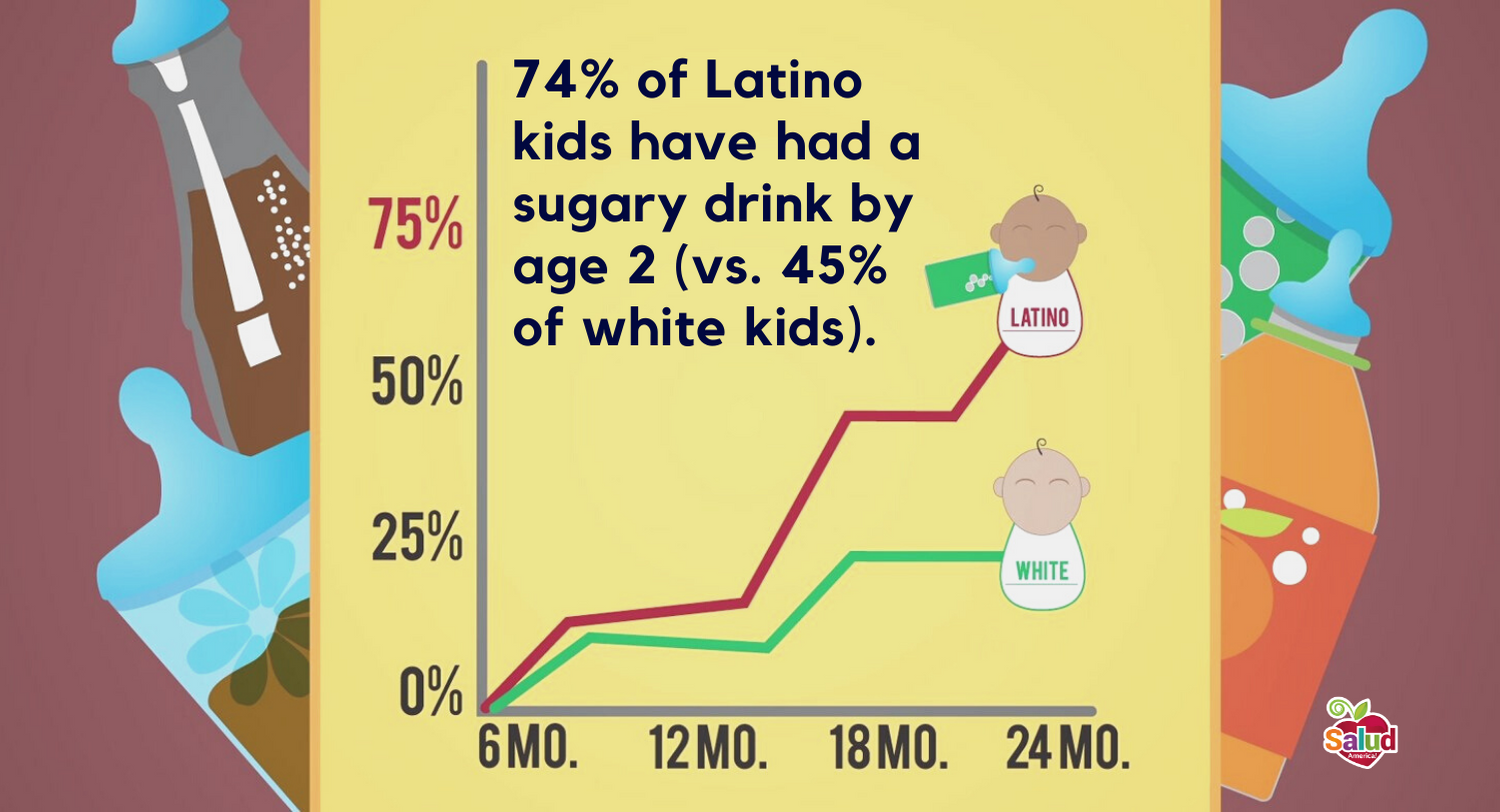
Share On Social!
Submit a comment to support strong limits on added sugars and no sugary drinks for toddlers in the scientific report that will help shape the 2020-2025 Dietary Guidelines for Americans.
A federal committee released the scientific report on July 15, 2020, after spending months reviewing data and over 55,000 public comments—including some from Salud America! members.
USDA and HHS will use the scientific report and comments to draft the 2020-2025 Dietary Guidelines for Americans.
You can comment on the report through Aug. 13, 2020.
Marion Nestle, a nutrition researcher, told CNN that the report has “stronger recommendations” than past guidelines. This includes no sugary drinks for children up to age 2.
“At the outset, I was concerned that the committee members might be heavily biased in favor of food industry interests,” Nestle said. “If they were, such biases do not show up in the final report. I think this committee deserves much praise for producing a report of this quality under these circumstances.”
Submit a Comment: I Support Strong Limits on Added Sugars, No Sugary Drinks for Toddlers
Tweak and submit this comment by Aug. 13, 2020:
Added sugars are contributing to an obesity crisis among our youngest children. More than four in 10 (45%) white children have had a sugary drink by age 2 and nearly three in four (74%) Latino children have, according to a Salud America! research review (http://salud.to/sugarresearch). Additionally, nearly 60% of infant and toddler food and drink advertising dollars promoted products not recommended for young children, including sugar-sweetened toddler milk (https://salud.to/babyfoodmarket). Nearly 2 of 3 U.S. children’s drinks sold in 2018 were unhealthy fruit drinks and flavored waters with added sugars and/or diet sweeteners (https://salud.to/childrens-drinks).
I support the independent Advisory Committee’s scientific report on July 15, 2020, that suggests added sugars should be limited to 6% of a person’s daily calories (down from 10%), and no sugary drinks for children up to age 2. I would also urge the promotion of water as the drink of choice, espeically on the MyPlate and MiPlato graphics. Do not weaken these recommendations at the request of the sugary drink industry. Make a stand for healthy children starting at the earliest ages.
Highlights of the Scientific Report on Dietary Guidelines
Here are some key findings:
- Reduce added sugars from 10% of daily calories to 6%. “The previous Dietary Guidelines took a major step forward in 2015 by suggesting added sugars be limited to 10 percent of total daily calories, but leading health organizations, supported by science, have long argued that lower limits would better protect health,” according to the Washington Post.
 Ban sugary drinks for children up to age 2. “The experts argued that calories from sugar-sweetened beverages may displace those from nutritious foods and increase the risk of the child becoming overweight,” according to the Washington Post.
Ban sugary drinks for children up to age 2. “The experts argued that calories from sugar-sweetened beverages may displace those from nutritious foods and increase the risk of the child becoming overweight,” according to the Washington Post.- Breastfeed babies, whenever possible. “The strongest evidence found was that ever being breastfed may reduce the risk of overweight or obesity, type 1 diabetes, and asthma, compared to never being breastfed,” according to the report.
- Don’t start solid foods for babies before age 4 months. “Research shows doing so is associated with an increased risk of obesity at 2 to 12 years,” CNN reports.
- Give fully and partially breastfed babies 400 IU of vitamin D from birth until the baby is weaned and drinking vitamin D-fortified cow’s milk or infant formula, CNN reports.
- Lower the the limit of alcoholic drinks per day for men down from two to one. “Research has indicated higher average alcohol consumption is associated with an increased risk of all-cause mortality, so those who do not drink should not begin to drink because they believe alcohol would make them healthier,” CNN reports.
The report did not address red meat consumption, or the promotion of water over other beverages.
Submit a comment by Aug. 13, 2020:
Why Do We Need Strong, Equitable Dietary Guidelines?
Unhealthy eating is now the top cause of premature death in the nation.
Nutrition-related diseases disproportionately impact communities of color and low-income families.
 Latinos, for example, tend to live in food swamps. These have an abundance of unhealthy fast food options and a void of grocery stores and farmer’s markets with healthier options, according to a Salud America! research review. This leads to over-consumption of unhealthy food and higher rates of obesity among Latino children and adults.
Latinos, for example, tend to live in food swamps. These have an abundance of unhealthy fast food options and a void of grocery stores and farmer’s markets with healthier options, according to a Salud America! research review. This leads to over-consumption of unhealthy food and higher rates of obesity among Latino children and adults.
Latino children also drink more sugary drinks, and at younger ages.
Coronavirus also is worsening these issues, as well as food insecurity.
“Bringing across health equity in the Dietary Guidelines for Americans—the leading set of nutrition recommendations for people and public health professionals—is especially important for Latinos and other communities of color,” Ramirez said. “We must bring healthier diets within reach of all populations.”
Submit a comment by Aug. 13, 2020:
What Is Next in Developing the Dietary Guidelines?
The government updates the Dietary Guidelines for Americans every five years.
Guidelines set nutritional targets and dietary limits for children (ages 2-18), adults (19-64), and older adults (65 and older). Now, for the first time, guidelines will cover pregnant women and babies (birth to age 2).
Parents, nutrition leaders, healthcare providers, and others can use the guidelines help people choose an overall healthy diet.
After the current comment period closes Aug. 13, 2020, USDA and HHS will issue final guidelines around December 2020.
Submit a comment by Aug. 13, 2020:
Explore More:
Healthy FoodBy The Numbers
1
Supermarket
for every Latino neighborhood, compared to 3 for every non-Latino neighborhood



